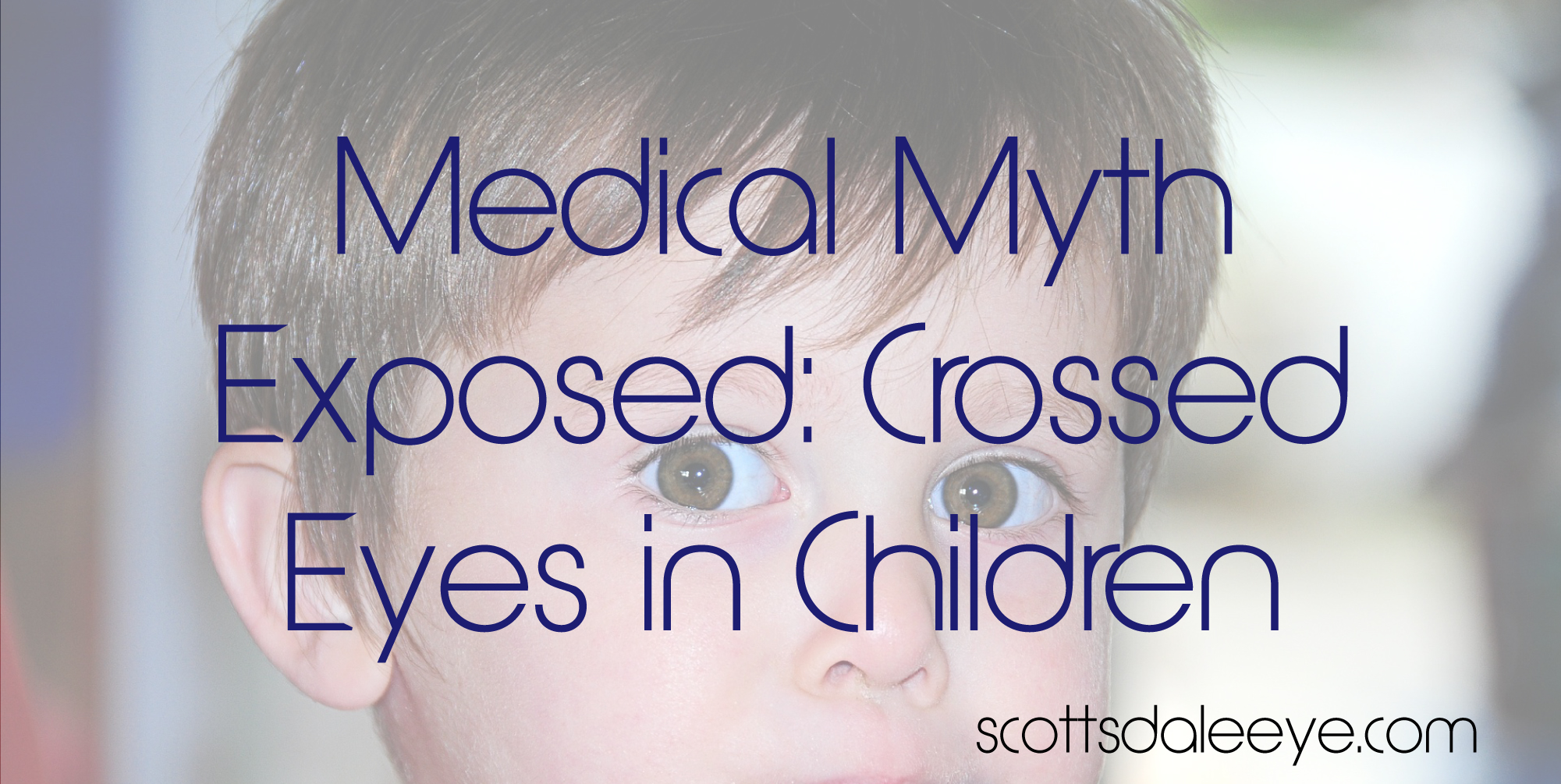MYTH: “Children outgrow crossed or misaligned eyes”
One question eye doctors hear from time to time is “will my child outgrow crossed eyes?”
Crossed eyes or Strabismus is a condition that affects the muscles in the eyes and prevents them from looking at the same place at the same time. With this condition one eye will focus in on the object you are viewing while the other eye is misaligned looking either upward, downward or inward. Strabismus can affect just one eye or can be intermittent between both eyes.
This condition can be present at birth or can develop in childhood. Children with a family history of strabismus may be at a higher risk. Most children are diagnosed between the ages of 1 and 4 years old.
Here is a great chart From All About Vision that shows the symptoms of misaligned eyes.

Photo Credit: AllAboutVision.com
False. Children do not outgrow crossed eyes. A child whose eyes are misaligned may develop poor vision. The straight or straighter of the two eyes becomes dominant and the brain can “turn off” or ignore images from the weaker eye and a lazy eye may develop. If left untreated the unused or misaligned eye will not develop good vision and can affect the development of depth perception.
Children with symptoms of misaligned eyes should be examined and treated as soon as possible by an eye doctor. less invasive treatment for crossed eyes can include eye glasses if the child has farsightedness, an eye patch can be worn over the good eye to help strengthen the muscles in the weaker of the two eyes, or eye drops to blur the vision in the stronger eye to encourage muscled development in the weaker eye. If those treatments do not work to correct the misaligned eye surgery can be performed to repair the muscles in the weaker eye.
If your child is presenting symptoms of misaligned eyes call our office at 480-994-1872 to make an appointment today or make an appointment online!
This article reprinted with permission from the American Academy of Ophthalmology’s EyeSmart Campaign (www.geteyesmart.org).






